It is generally agreed that the largest chicken breed is the gentle Jersey Giant. Of course, every chicken is different, just as every person is different, so there are bound to be smaller and larger individuals in each species. Here’s some basic information about the top five largest chicken breeds.
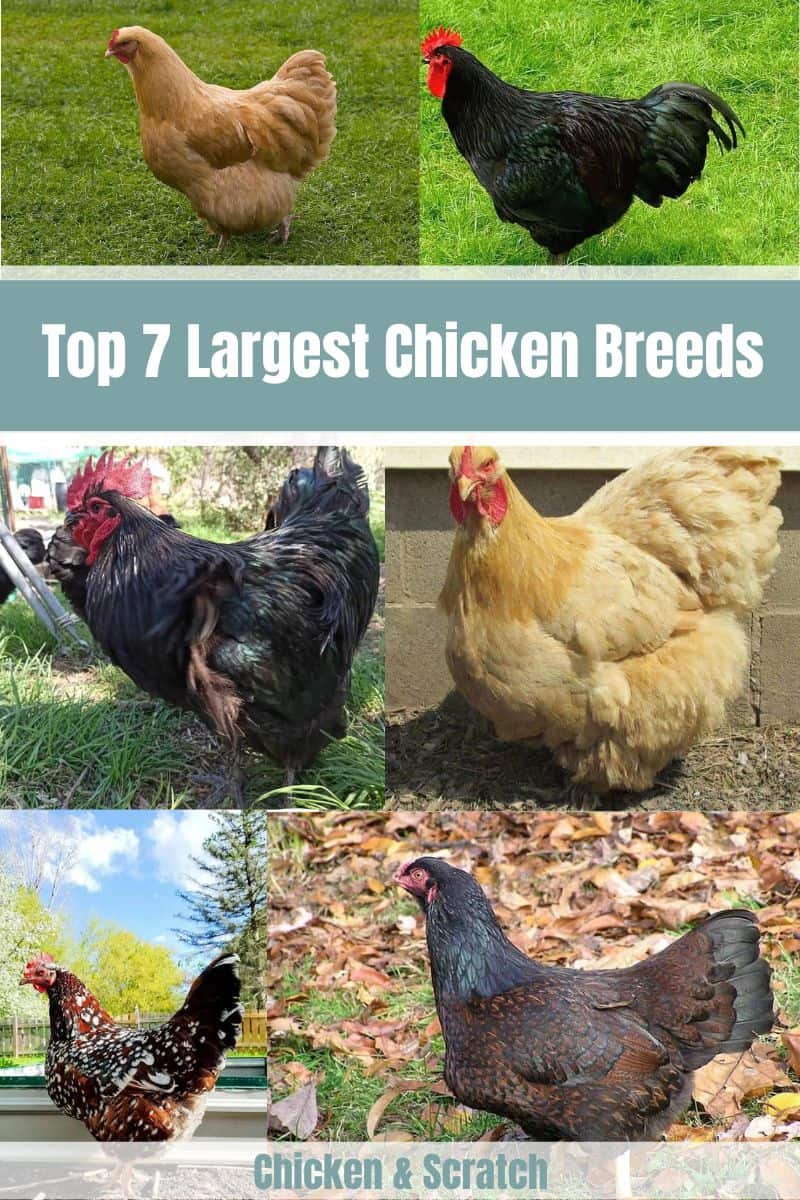
| Breed | Weight | Egg Color | Egg Size |
| Jersey Giant | 13-15 lbs | Brown | Extra Large |
| Brahmas | 8-10 lbs | Brown | Medium |
| Cochin | 7-11kg | Brown | Medium |
| Cornish | 8.5-10 lbs | Tinted | Large |
| Orpington | 7-11kg | Light Brown | Medium to Large |
| Sussex | 7-9 lbs | Brown | Medium to Large |
| Australorp | 7-10lbs | Brown to Dark Brown | Large |
1. Jersey Giant
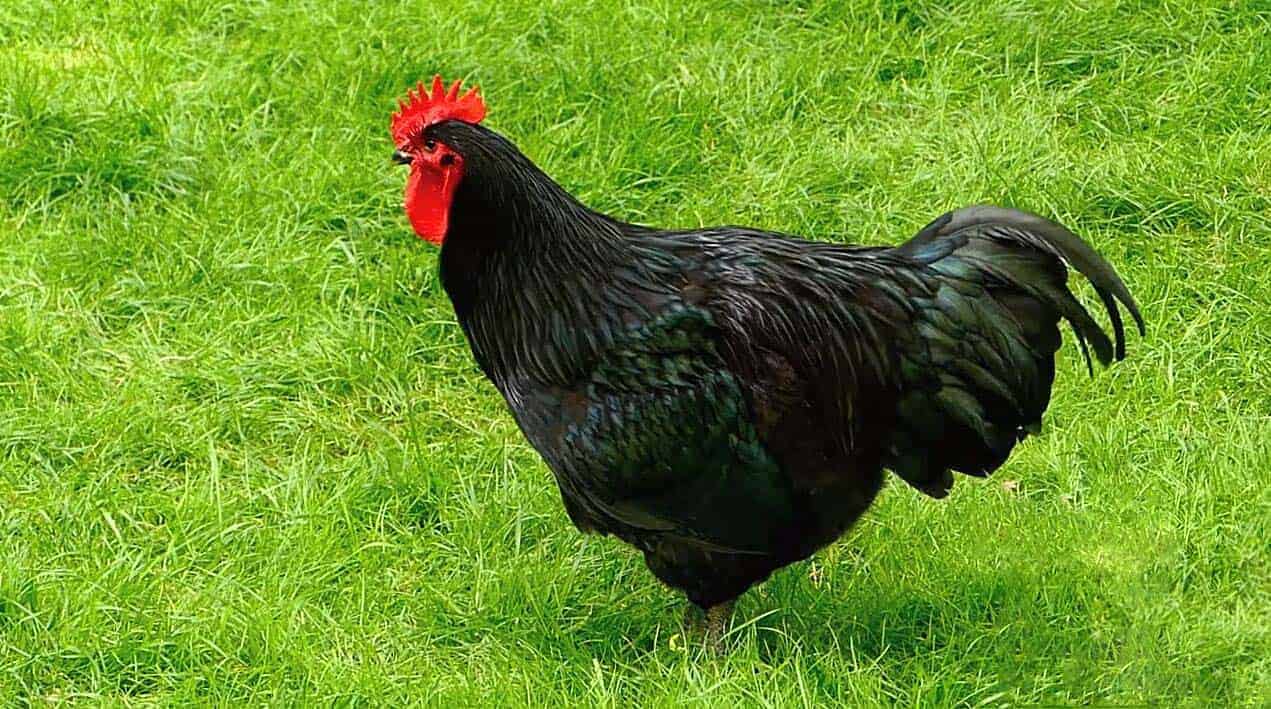
- Weight:13-15 lbs
- Egg Production:200+
- Egg Color: Brown
- Egg Size: Extra Large
The Jersey Giant is an American breed developed in New Jersey in the 1800s. The breed was designed primarily as a meat source to rival turkeys and has become recognized worldwide as the largest chicken breed.
Jersey Giants certainly live up to their purposeful history. Roosters average 20-26 inches in height and 13-15 pounds. Hens are not far behind at 14-20 inches and 10-12 pounds. However, because this breed can take up to nine months to mature for butchering, it has never become popular with commercial growers as a meat bird.
These birds are most well-known in glossy black. However, white and blue are also officially recognized colors. Breeding blues may result in a splash (variegated) color, but this color is not recognized by the American Poultry Association (APA). Blackbirds have a glossy, green tint, even on their gray legs and feet, and bright red wattles.
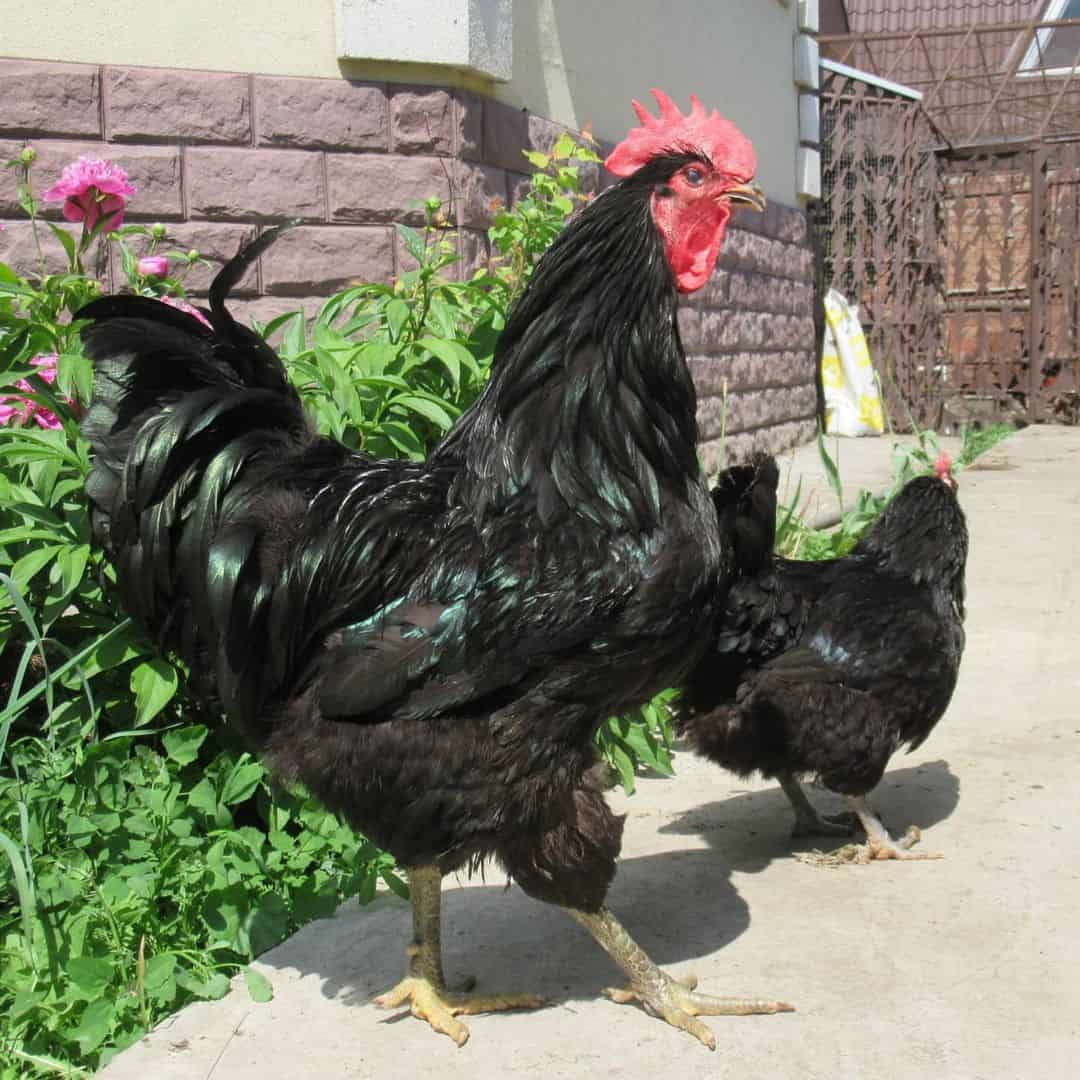
Jersey Giants are not only magnificent to look at but are friendly in temperament. Being the most giant chicken breed does not mean they are bullies with other animal species or humans. They are, in fact, highly sociable chickens, good with children, other farm animals, and pets.
Since they are a large breed, they eat a lot and require plenty of space. Because of this, Jersey Giants may not be a good idea for tiny yards. Small spaces don’t seem to affect the birds’ temperament, however. They continue to be easy-going, even into old age.
The hens are good layers, even during the winter season. They are excellent mothers and love to brood, but their large size may result in crushed eggs. So incubating is recommended if possible. Read more about Jersey Giant.
2. Brahmas
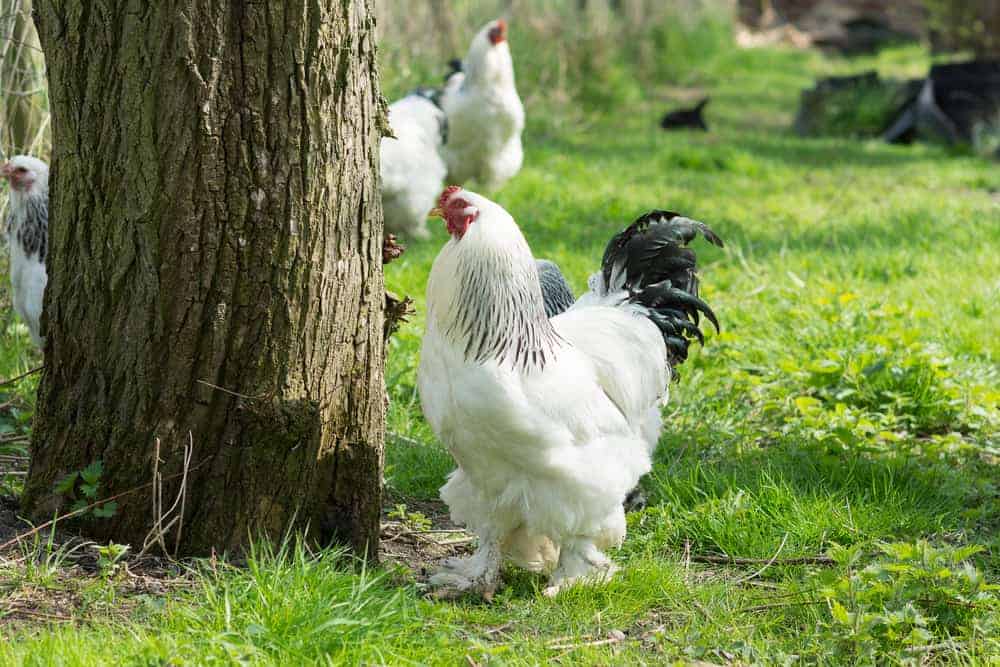
- Weight: 8-10 lbs
- Egg Production: 150
- Egg Color: Brown
- Egg Size: Medium
Brahmas compete well for the largest chicken breed as they may grow even taller than Jersey Giants. Roosters may reach up to 30 inches tall. However, Brahmas are more slender. Roosters generally weigh in at around 10 pounds, and hens at 8.
Brahmas are also an American breed, actually a bit older than the Jersey Giant breed. They were developed in the 19th century from Chinese and Indian breeds primarily as a meat source. Their majestic bearing has earned them the nickname “King of Chickens.” However, they are also known to be docile in temperament.
The APA recognizes three feather patterns in Brahmas, light, dark, and buff. The birds are thickly feathered, even their feet. They have broad, long, and deep bodies with a distinctive narrow “V” shape when viewed from the side.
This breed’s thick feathers help it do well in cold climates, although feathered feet need to be protected from frostbite and dampness. Many times the birds will avoid damp areas. They don’t seem to like getting their feet wet.
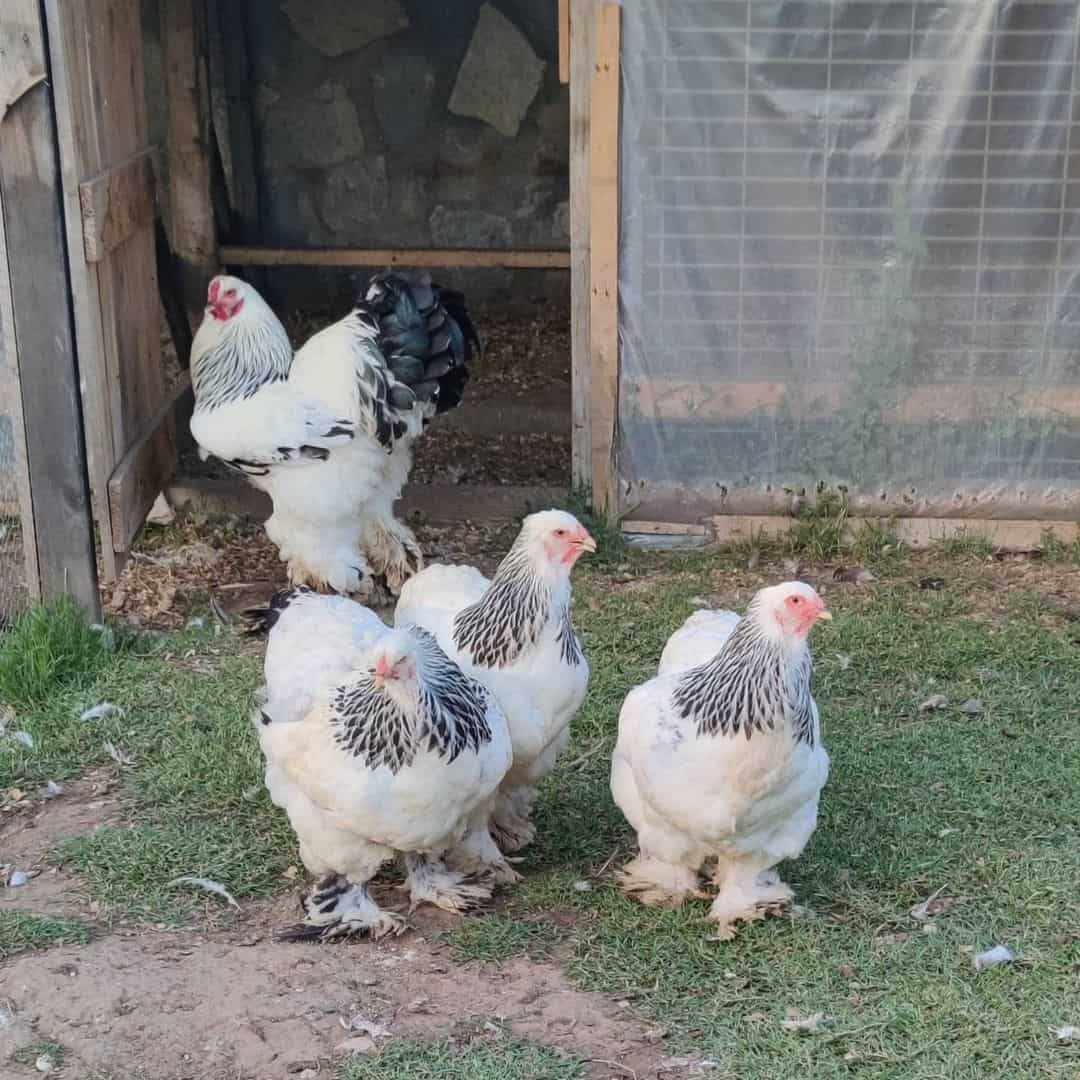
The hens are primarily winter layers and like to brood in the warmer months. Hens begin laying at 6-7 months old and produce 3-4 medium to large brown eggs per week during peak laying seasons. A hen may produce about 150 eggs in a single year.
Brahmas are gentle, non-aggressive birds, whether confined or roaming free. They are excellent foragers. Because of their size, extra-large nesting boxes and accessways may be necessary. They prefer well-drained soil in a dry, cool environment.
As a meat source, Brahmas are very slow to mature; some say up to 2 years. There are smaller bantam breeds also available. The birds make good pets, running to greet their owners and tolerating children’s attention well. Read more about Brahmas.
3. Cochin
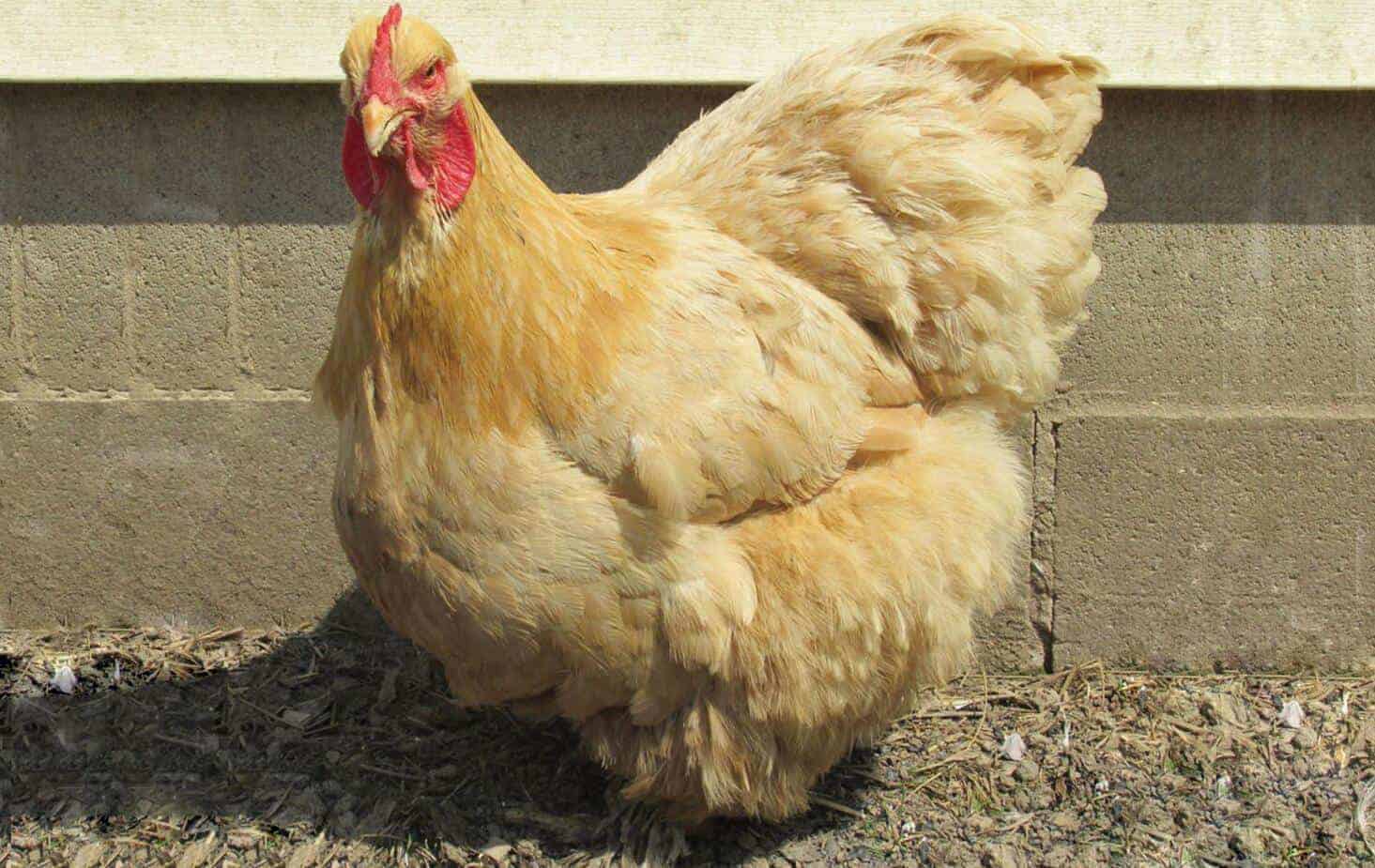
- Weight: 4.4 – 11 lbs
- Egg Production: 150-180
- Egg Color: Brown
- Egg Size: Medium
Next on the list for the largest chicken breed is the Cochin. These birds are as friendly and cuddly as they are fluffy. They can grow up to 26 inches tall. Their abundant feathering makes them look larger than their actual size, which averages around five pounds.
Cochin chickens have Vietnamese and Chinese origins and were introduced in the UK and America around 1845. Their thick coat of feathers may have light or dark coloring, red earlobes, wattle, and a five-point comb. Thick plumage plus a hardy constitution makes these birds particularly resistant to cold, harsh weather conditions.
Cochins are extremely friendly birds that make ideal pets for children, especially the much smaller bantam variety, which averages around 2 pounds. They can be rather lazy birds, tending towards becoming obese. Their easy-going demeanor makes them more susceptible to predators, so a closed-in area may be a good idea for the most part.

Cochin hens lay best during the winter. Because the breed has been bred for appearance more than function, the hens don’t produce as many eggs as other breeds. The average is about 150 large brown eggs per year.
Cochin is easy to care for, which makes them ideal for beginners. Their status among the largest chicken breeds and magnificent appearance make them champions for first-year 4H competitions or those interested in learning to raise their eggs and meat but don’t want to be overwhelmed by egg production.
Cochin meat is not as prized as other breeds. It tends to be dark and coarse in texture. This breed is highly valued for its beauty and personality among the widest chicken breed choices. Read more about Cochin Chicken.
4. Cornish
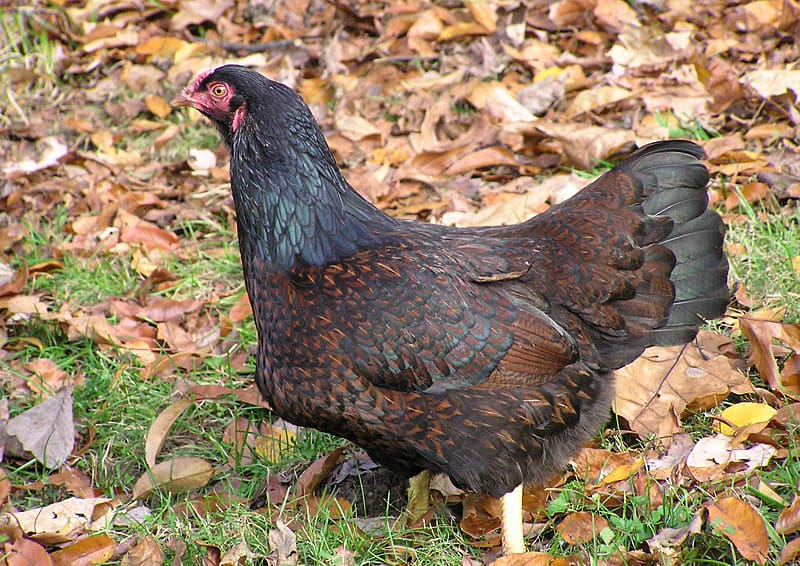
- Weight:5-10 lbs
- Egg Production: 150-170
- Egg Color: Tinted
- Egg Size: Large
The Cornish chicken also ranks high on the list of the largest chicken breeds. The breed was developed in Cornwall, the UK, in the 1800s from Vietnamese and Chinese origins. This breed has become one of the most prevalent used in the commercial meat industry.
There are two distinct types of Cornish chickens, the Cornish Game and the Jubilee Cornish Game. Jubilee chickens are slimmer and lighter in color and weight than Cornish chickens. Cornish roosters average around 8.5-10 pounds and up to 26 inches tall, while hens average about 5.5 pounds. Cornish Game chickens are a mixture of dark colors, including dark blue, green, and brown.
Cornish chickens are hardy, muscular birds. The breed is stocky, with a short neck and broad skull. The bird’s widely spaced legs may cause support problems as it gets older and heavier. There are several color variations, such as white or black, white-laced red, or buff.
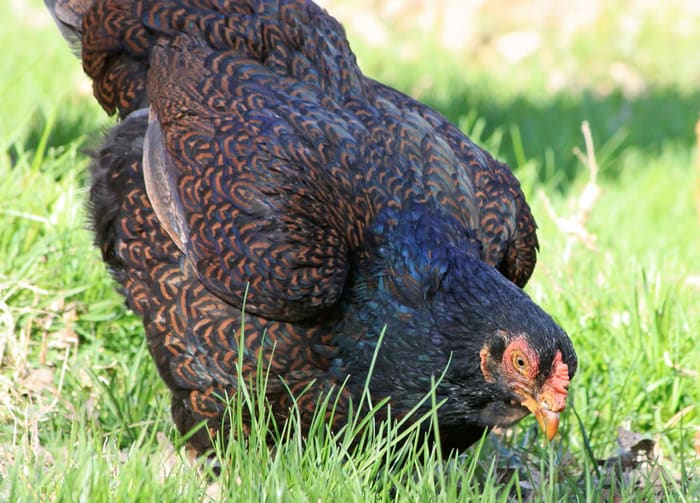
These birds are able to handle a wide range of climates, both hot and cold. This characteristic makes the breed a good choice for small-scale chicken owners in almost any region. However, it’s a good idea to provide reliable shelter during adverse weather.
The birds are traditionally raised for the table, having large breasts and excellent meat. Hens lay an average of 150-170 brown eggs per year, below average for most breeds.
Cornish chickens need plenty of room to prevent them from having dominance issues. Overall, the breed is docile but not as friendly as the breeds mentioned above. They also have piercing eyes that make them seem like one of the less approachable of the largest chicken breeds. Read more about Cornish Chickens.
5. Orpington
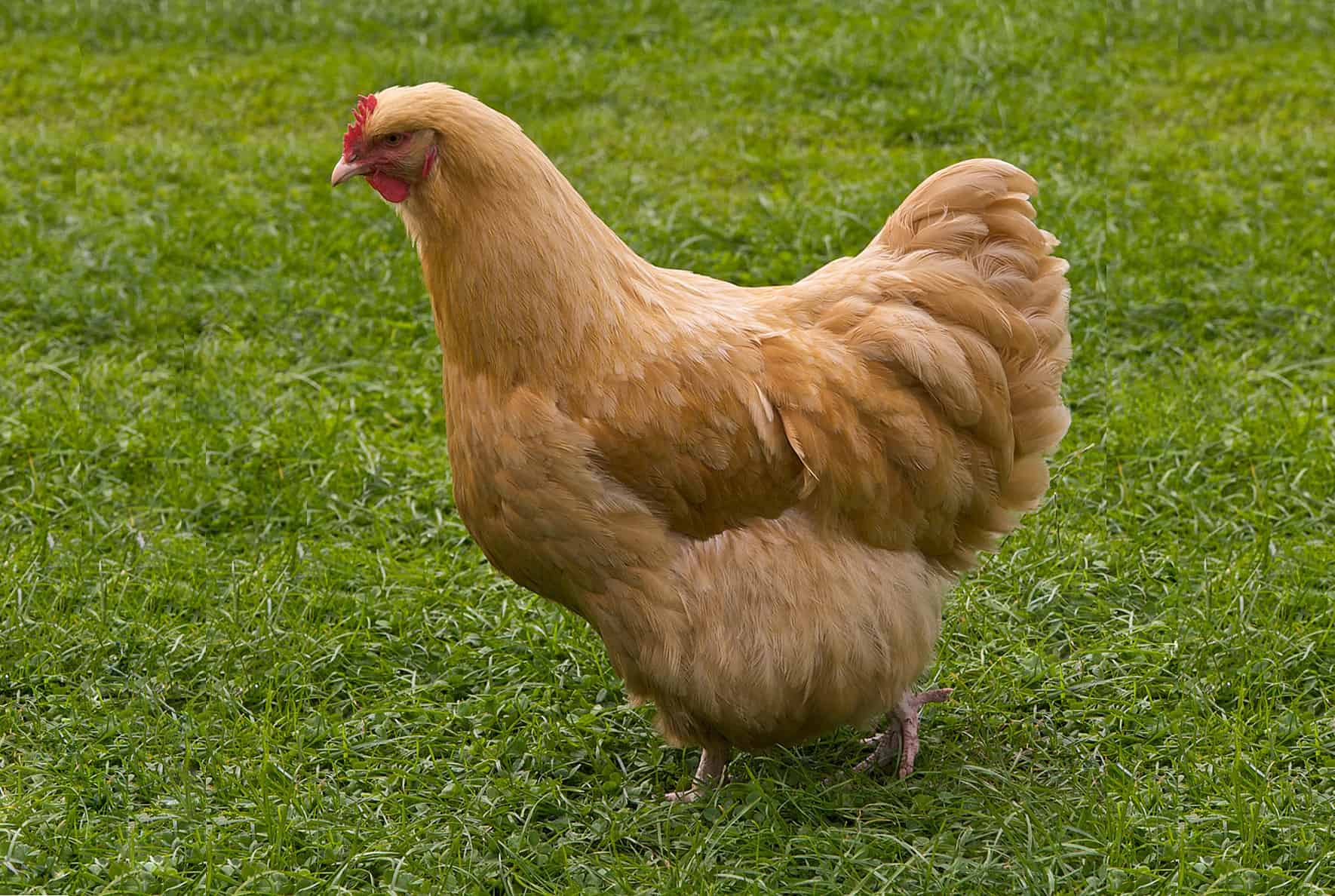
- Weight: 4.4–10.6 lbs
- Egg Production: 175-200
- Egg Color: Light Brown
- Egg Size: Medium to Large
To round out our top 5 list of the largest chicken breeds, we include the Orpington or Buff Orpington. The Orpington chicken originated from the UK town of that name. They are great dual-purpose birds with a friendly personality.
Orpington roosters are an average of around 16 inches tall and 10 pounds, and hens weigh about 8 pounds. This is a heritage breed and can be found in a variety of colors other than buff, including black, blue, chocolate, and even lavender.
Orpingtons tolerate cold climates well with their thick coat of feathers. But they may suffer in hotter climates. You’ll need to ensure they have plenty of cover from the sun in summer so they don’t overheat.

Orpingtons are an excellent meat source that can mature in as little as 22 weeks. They are also exceptional layers. A hen can lay between 200-280 eggs per year. Hens also love to brood and hatch chicks, making this an excellent breed for learning about that process.
Though the Orpington is one of the largest chicken breeds, it is also one of the most docile. Its laid-back nature may cause it to become “henpecked” by more aggressive breeds, so use caution in a mixed pen.
Orpingtons are playful, curious birds that enjoy children and social interaction. Though they are among the largest chicken breeds, they get along well in confinement, making them an excellent choice for small farms and self-sufficient households. Owning Orpingtons can be an all-around enjoyable experience for everyone in the family. Read more about Orpington Chickens.
6. Sussex
- Weight: 7-9 lbs
- Egg Production: 250+
- Egg Color: Brown
- Egg Size: Medium to Large
The Sussex breed of chickens is a darling to many because it’s friendly, stunningly beautiful, and lays eggs excellently. Different colors are available for you: Red Sussex, Speckled Sussex, or White Sussex – each with unique sizes and markings! If you’re looking for hens that’ll produce superb meat and excellent egg production capacity in plenty- the British Sussex hits all those targets!
Sussex chicken can weigh 7-9 pounds (for males), while females tend to be smaller at around 7 pounds. Add this to their exceptional egg-laying traits guaranteeing up to 250 brownish-colored eggs yearly will make your poultry section stand out. Read more about Sussex.
7. Australorp
- Weight: 7-10 lbs
- Egg Production: 250-300+
- Egg Color: Brown – Dark Brown
- Egg Size: Large
Meet the Australorp, an extraordinary breed of chickens hailing from Australia. These birds are among the largest found in their origin country and can weigh anywhere between 7-10 lbs! Roosters tend towards a whopping weight range of 8-10 pounds while hen sits comfortably at around 7-9lbs.
With glossy black feathers giving them that emerald sheen, plus two varieties; Black and Blue. Australorps aren’t just ornamental but also friendly animals well-known for being hardy pets best suited for backyard flocks. This breed has an impressive average egg production ranging up to an amazing 300 annually! Read more about Australorp.
Enjoying the Largest Chicken Breeds
If you are just beginning your adventure into raising your own chickens, it’s a good idea to research the basics of how to care for your new brood. Your local feed store can give you valuable advice along with the internet. The largest chicken breeds are some of the most enjoyable. Enjoy your adventure!

Joseph Hudson has been raising chickens for over 15 years. In 2018, he completed the Agriculture & Natural Resources program at Mt. San Antonio College. He currently raises over 1400 chickens on his 7.5-hectare farm. He keeps sharing his experience on raising healthy and happy chickens on Chicken Scratch The Foundry.

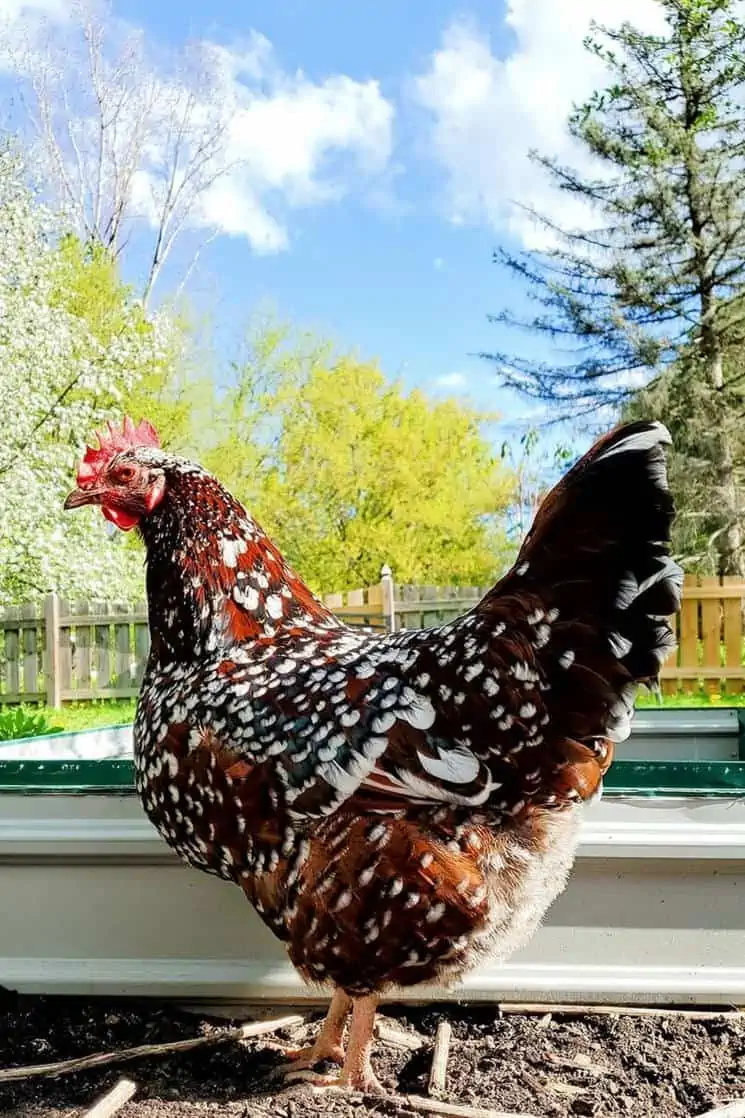








Where can one get the different breeds they prefer, is supplier readily reachable?
tractorsupply
What breed of chickens makes a giant fluffy Brahma?
Crossed a black giant and a black Americana, picked out 3 hens with the looks of the Americanas and put a Americana rooster over them, my 3rd generation has all the looks and lay blue eggs just like pure Americana, just a lot bigger! Won at every show so far and people are begging for brood stock or eggs